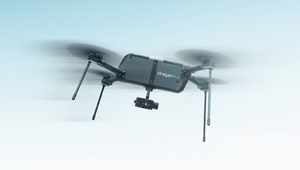Utilities Embrace AI for More Integrated Operations: Cisco StudyUtilities Embrace AI for More Integrated Operations: Cisco Study
OT is defined as technology – hardware, software, networks – that interface with the physical world

Nearly half of utilities expect AI will support better collaboration across IT and operational technology (OT) functions integral to their operations, according to a new report by Cisco.
The report spoke to 145 utility industry professionals in 17 countries from management to the C-suite, at firms with annual revenues of more than $100 million.
OT is defined as technology – hardware, software, networks – that interface with the physical world. In utilities, this includes industrial control systems that automate activities to generate and deliver electricity and natural gas to customers.
Most (90%) survey respondents said they are maintaining or increasing OT expenditure, with 45% saying AI will support better collaboration across IT and OT functions, which is seen as the second most important measure for overcoming internal obstacles to growth.
A main driver for investment is improving efficiency followed by increasing automation. Firms are investing in industrial networking to protect and maintain dispersed substations, distribution grids and distributed energy resources.
Currently, a lack of collaboration with IT is hampering the optimization of industrial infrastructure, Cisco said. For example, 43% of utility firms use insights generated through OT data to improve energy management and 48% expect AI to make industrial networking more reliable and secure. A third plans to invest in AI-enabled devices and cloud computing.
However, cybersecurity risks were seen as the top external (43%) and internal (34%) obstacles to growth. Utilities reported that the primary benefit of IT/OT collaboration is better cybersecurity, which is a top spending priority for almost half (48%) of utility firms over the next two years, followed by compliance with regulatory standards.
The main industrial infrastructure cybersecurity challenges identified were vulnerabilities in legacy systems and outdated software (46%) and malware or ransomware attacks specifically targeting operational technology (41%).
“There is no industry with more digital transformation opportunity than energy and utilities. This report highlights their urgency on cybersecurity protection and AI readiness," said Samuel Pasquier, vice president of product management, industrial IoT at Cisco.
"We’ve been a strategic partner to this industry for decades and continue to be committed to delivering the most innovative industrial networking solutions to help them stay ahead in this rapidly evolving landscape.”
The report also found that 81% of utilities have no plans to reduce the number of vendors they work with, indicating a preference to optimize existing technology rather than attempt to shed and consolidate platforms.
However, one-third said major vendor solutions designed and integrated for both types of networks would speed IT/OT collaboration.
But challenges to adoption were identified as implanting robust cybersecurity measures (39%), standardization (37%) and managing multiple vendors (36%), among other things. As well as lack of understanding of how to design IT/OT collaboration (41%) and siloed organizations (40%), the top two reasons utility firms struggle to bring these teams into closer alignment.
This article first appeared in IoT World Today's sister publication AI Business.
About the Author
You May Also Like


.jpg?width=700&auto=webp&quality=80&disable=upscale)
.jpg?width=700&auto=webp&quality=80&disable=upscale)

.jpg?width=300&auto=webp&quality=80&disable=upscale)


